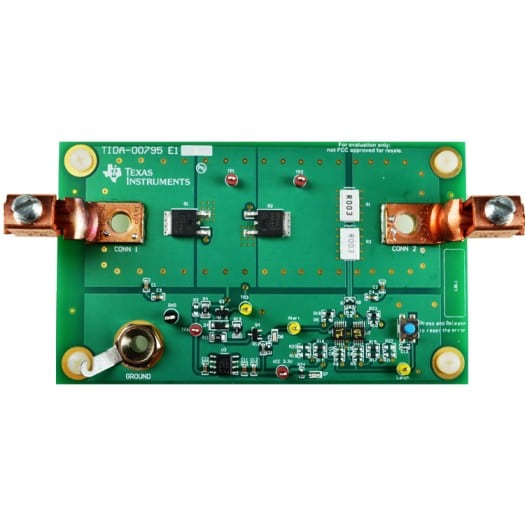With rapid response times and high accuracy, the eFuse design revolutionizes vehicle safety and manages power for evolving EV charging demands.

Fuses are commonly employed in various products to protect against current surges and the potential harm caused by overcurrent. The concept of a bidirectional automotive precision eFuse presents an innovative alternative to conventional car fuses. Traditional automotive fuses, currently dominating the market, suffer from delayed responses and limited accuracy. A fuse’s response time is inversely related to the system’s safety. Extended delay and slow reaction times can potentially harm the loads and components along the series path, such as wiring, semiconductors, and connectors. Consequently, manufacturers often build systems with extra safety buffers to mitigate these risks, inadvertently adding to the vehicle’s cost and weight indirectly impacting fuel expenses. An eFuse boasting swift response times and high accuracy can bolster system safety and eliminate the necessity for these compensatory designs.
The TIDA-00795 Automotive Precision eFuse reference design from Texas Instruments (TI) offers an advanced alternative to these conventional fuses, boasting enhanced accuracy and additional features. The eFuse design can serve as a foundation for creating a multichannel eFuse box and can be integrated into the Body Control Module (BCM) and Electronic Control Unit (ECU). The reference design is also utilized in the Electric Vehicle (EV) charging infrastructure, where the Human-Machine Interface (HMI) module contributes to the functionality of Electric Vehicle charging stations.
The design features of the eFuse offer an overcurrent limit of up to 30 A, but this can be scaled to exceed 100 A. The accuracy of the eFuse stands at more than 97%. With a swift response time, it peaks at 10 μs, but this can be adjusted as needed. To cater to inrush currents, a configurable delay time feature can be set for intervals of 10, 50, or 100 μs. Moreover, each channel has a target quiescent current of less than 10 μA. Safety measures include reverse polarity protection and compliance with the 12-V electrical transients defined by ISO 7637-2. For enhanced accuracy, there’s a configurable hysteresis feature. Additionally, to manage errors, there’s an option to either power off or use a push button for resets.
The automotive eFuse design is segmented into distinct subsections. Firstly, there’s the Current Sense and Activation (CSA) component. The CSA circuit holds significant prominence within the eFuse system design, maintaining a consistency of 90% across its structure. This stability allows it to be adaptable to various current sense values. Next, the design incorporates the Switch and Control Circuit (SCC). Lastly, the design includes the Power Supply and Protection section, tailored explicitly for transient suppression. The design of the automotive precision eFuse accommodates jump starts, cold cranking, and reverse polarity scenarios.
TI has tested this reference design. It comes with a Bill of Materials (BOM), schematics, etc. You can find additional data about the reference design on the company’s website. To read more about this reference design, click here.









